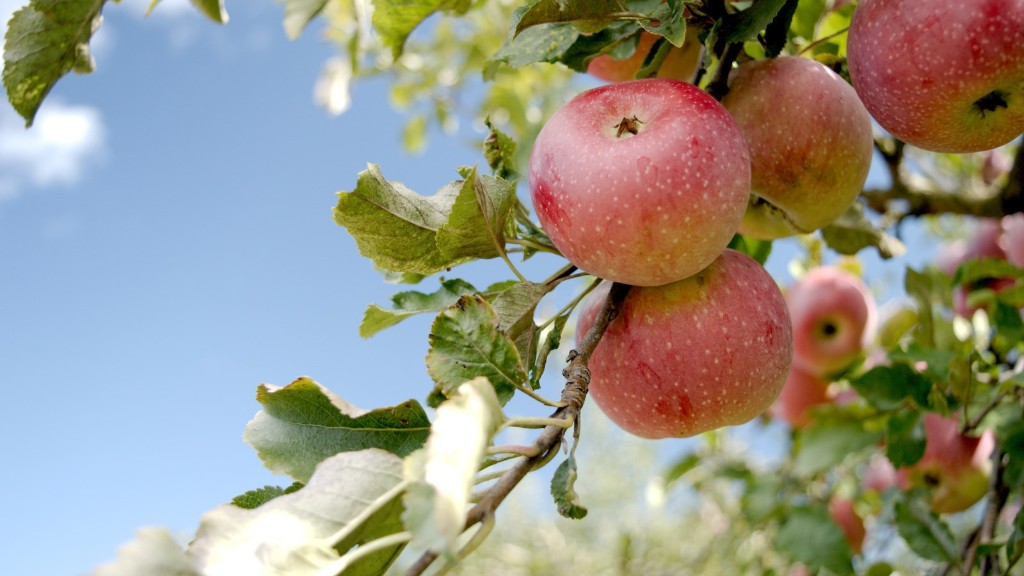Fruit trees, such as the lemon tree, are a great addition to any garden. Lemons are high in Vitamin C and provide sourly-tangy flavors to beverages, sauces, and salads. For an extra bit of sweetness, try adding some freshly-picked lemons to your next recipe. Planting and properly caring for your lemon tree will ensure that you get a bumper crop of citrus every season. Here are some tips for successful lemon tree cultivation.
Ensure that your lemon tree is planted in a spot that receives plenty of sun. The ideal location for a lemon tree is one that will receive 6 to 8 hours of sunlight daily. You should also keep the tree away from windy areas, as wind can dry out the soil and cause the leaves to wilt. Keep your tree well-watered, especially during dry spells and in warmer climates.
Mulching your lemon tree is crucial for optimal plant care. Use organic material such as manure, compost, or straw to help plant roots retain moisture and keep them cool during the hot summer days. Be sure to leave some space around the base of the tree, to prevent rot and fungal diseases. Make sure to mulch up to six inches away from the stem of your lemon tree.
Once your lemon tree has grown and the fruits have ripened, it’s important to harvest them correctly. Fruits should be picked at their prime, when the rind is yellow-orange and slightly firm. Be sure to use clean, sharp shears to cut the fruit away from the stem. When harvesting lemons, it’s best to harvest in the morning when the dew is still present, as this will keep them from drying out.
Finally, take care to properly fertilize your lemon tree. A balanced fertilizer mixture (10-10-10 or 8-4-4) should be applied every six to eight weeks throughout the growing season. Fertilizing with compost tea or organic matter is also beneficial for encouraging healthy growth. Over-fertilizing or using too much fertilizer can harm your tree, so be sure to respect the manufacturer’s instructions.
Managing Insects and Pests
Properly caring for your lemon tree also involves managing insects and pests. Aphids, mites, and scale are some of the most common pests that can damage lemon trees. To keep these pests in check, make sure to regularly prune off any diseased or damaged branches and leaves. Ladybugs, lacewings, and predatory mites can also be used to help control pests in the garden – they are natural predators of many destructive insects and will help keep the population of unwanted pests at bay.
Additionally, you should take preventive measures to protect your tree from disease. Make sure to practice good sanitation, such as removing dead branches and leaves and avoiding overcrowding. You should also avoid using chemical pesticides unless absolutely necessary, as these can harm your tree and beneficial insects.
Furthermore, ensure that your lemon tree has enough ventilation and air circulation. Prune away any lower branches that are close to the ground, as this will help reduce the risk of fungal diseases. And finally, make sure to monitor your tree throughout the year – take note of any signs of insect damage or disease, and contact a qualified arborist if necessary.
Training Your Lemon Tree
Training a lemon tree is an important part of the cultivation process. Through proper pruning and training, you can control the size and shape of your tree. This will also help to open up the canopy, promoting better air circulation and light exposure. Prune off any suckers or crossing branches to maintain a strong, central trunk. You should also avoid pruning off more than one-third of the tree’s foliage at once, as this can shock the tree. Instead, opt for small, gradual prunings.
If you want to create an espalier, you can train your lemon tree by wiring and tying the branches to your desired form. Be sure to use flexible wires, as these will be more forgiving when the tree grows. You should also use wide strips of material to tie the branches to the training wires, as these will be strong enough to support the branches but won’t damage the bark. Finally, pay close attention to your newly-trained tree and be sure to readjust and tighten the wires as the tree grows.
Harvesting Fruit
Once your tree has produced fruit, you’ll want to harvest the lemons at their peak. In general, lemon trees take from six to eight months to produce ripe fruit, depending on the variety and the climate. You’ll know your lemons are ripe when the rinds take on a yellow-orange hue and the fruit is slightly firm. Be sure to use clean, sharp scissors to cut the fruit away from the stem, and gather your lemons in the morning when dew is still present to help keep them from drying out.
Storing Fruits
Once you have harvested your lemons, proper storage is key in preserving the freshness of your fruit. Place your lemons in a paper bag or on a lined tray in a cool, dry place away from any direct sunlight. Be sure to check your fruit regularly, as over-ripened lemons can become shriveled and dry. For best results, use up your freshly-picked lemons within a few days of harvesting them.
Feeding Your Lemon Tree
In addition to regular pruning and training, your lemon tree will need to be fed. Feeding your tree with a balanced fertilizer (10-10-10 or 8-4-4) every six to eight weeks is the best way to keep your tree healthy. During the spring and summer months, you can also add compost tea or organic matter to the soil, which will encourage healthy growth. However, it’s important to not over-fertilize, as this can harm the tree and decrease its fruit production.
Troubleshooting Common Lemon Tree Problems
Lemon trees can suffer from a variety of issues, but don’t worry, most of them are preventable or easily remedied. To help keep your lemon tree in top condition, watch out for signs of stress such as wilting leaves, fruit drop, and yellowing of the foliage. If your tree is affected, take steps to improve air circulation, check for insects or pests, and make sure the tree is getting enough water.
If you’re having trouble with fungal diseases, be sure to properly prune your tree and ensure that it has plenty of ventilation. Avoiding over-fertilizing is also essential for combating common fungal ailments. Not matter what you’re dealing with, a qualified arborist can always help to diagnose and treat any problems with your lemon tree.



